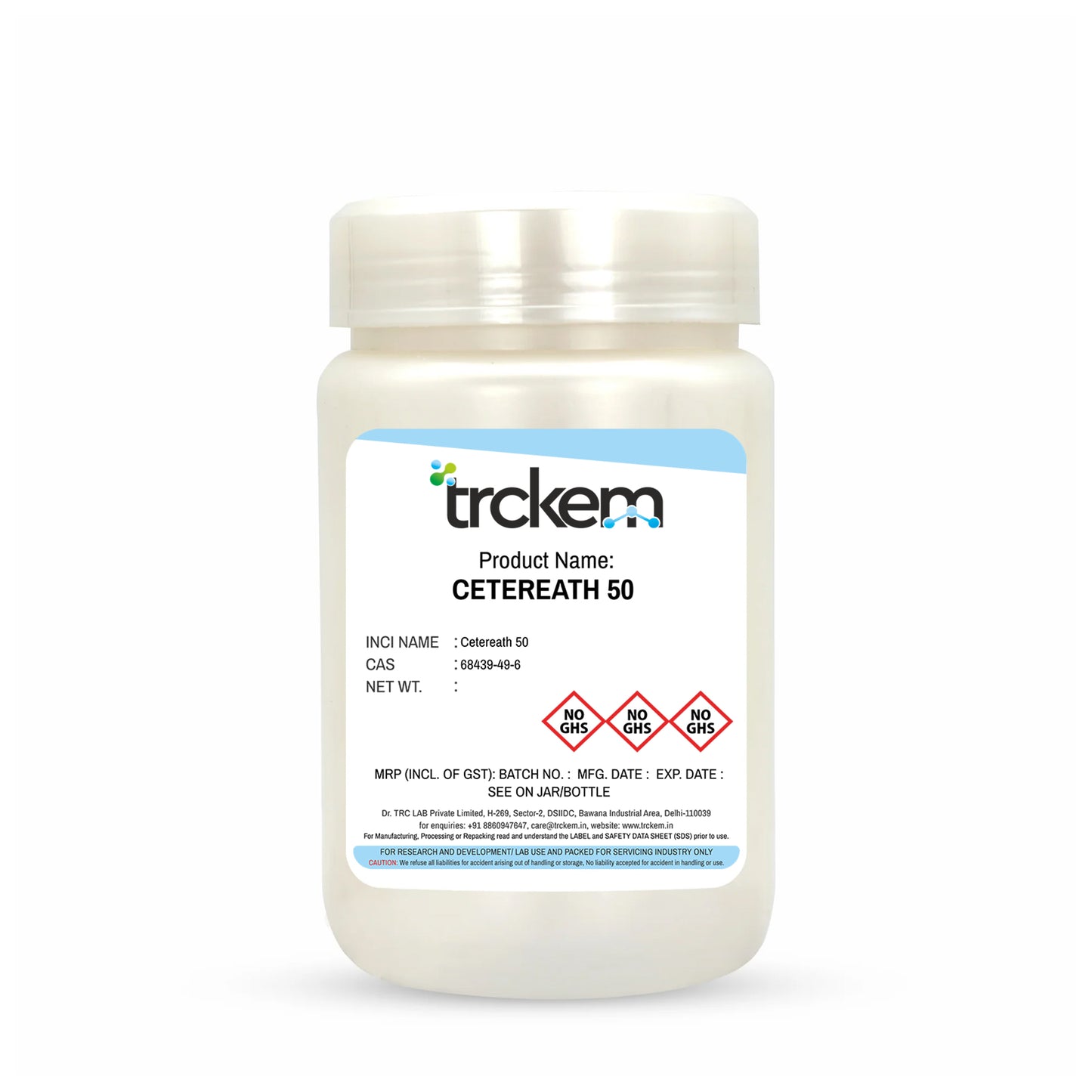

FAQ (Frequently Asked Questions)
1. What is Ceteareth-50?
Ceteareth-50 is a non-ionic emulsifier and surfactant, used in cosmetic and personal care products to stabilize emulsions and improve the texture of formulations. It helps blend water and oil phases and gives a smooth, spreadable consistency to creams, lotions, and conditioners.
2. What is the INCI name and CAS number of Ceteareth-50?
CAS Number: 68439-49-6
INCI Name: Ceteareth-50
3. What are the key benefits of Ceteareth-50 in personal care formulations?
Acts as a primary or co-emulsifier in oil-in-water emulsions
Enhances product stability, texture, and consistency
Improves spreadability and absorption of creams and lotions
Compatible with a wide range of oils, active ingredients, and pH levels
Facilitates the delivery of both water- and oil-soluble actives
4. In what types of products is Ceteareth-50 commonly used?
Ceteareth-50 is used in:
Facial moisturizers and anti-aging creams
Body lotions and hand creams
Hair conditioners and leave-in treatments
Sunscreens and after-sun lotions
Shaving creams and depilatory products
5. Is Ceteareth-50 safe for skin application?
Yes, Ceteareth-50 is considered safe for use in rinse-off and leave-on personal care products when used at recommended concentrations. However, it is not recommended for use on damaged or broken skin due to potential absorption of impurities.
6. Is Ceteareth-50 a natural or synthetic ingredient?
Ceteareth-50 is a synthetic compound, derived from cetyl and stearyl alcohols (from natural fats and oils) reacted with ethylene oxide. While not fully natural, it is widely accepted in conventional and high-performance formulations.
7. What is the recommended usage level of Ceteareth-50 in formulations?
Typical usage levels range from 1% to 5%, depending on the formulation type and emulsification needs.
8. Is Ceteareth-50 environmentally friendly?
Ceteareth-50 is partially biodegradable, but since it is ethoxylated, it may not meet the strict standards of eco-certified or natural formulations. Its environmental impact depends on sourcing and manufacturing processes.



